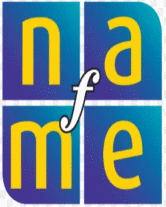Objectives
- Students will learn a traditional circle game, a rueda (roo-EH-dah), from Puerto Rico.
- Students will identify the dynamic accents in the song by adding appropriate movements.
- Students will learn to sing this Puerto Rican song in Spanish.
Materials
- Space in the classroom for the children to form one or several circles
Procedures
- A La Limón is one of the many traditional rueda songs that Puerto Rico and other Hispanic countries assimilated from Spain. As in other cultures,Puerto Rican children sing while walking around in a circle holding hands. This inSpanish is called a rueda. The title "A La Limón" may be roughly translated as "in the manner of a lemon," but it does not have a specific meaning except its association
with a rueda game. This one is particularly appropriate for smaller children. Whilesinging the first phrase, which mentions the broken-down fountain, children usuallyjump and pretend to fall like the fountain. For a classroom situation, a small jump orgesture should be enough to accent the normally unstressed second beat and corresponding syllable in the fourth measure while continuing the flow of the song. - Using an example the children know, such as "The Mulberry Bush" or "Looby Loo,"explain to them that children all over the world do singing games. Tell them that thisone is in Spanish and comes from Puerto Rico. Instruct them to keep the beat to thesong (while you sing) by stepping in place by their seats. Sing the first verse at a moderate tempo. If the students are not independent at finding the beat, help them bystepping as you sing. After the activity, give the translation of the lyrics and repeatthe first verse until they can do the beat accurately and independently.
"A la Limón"
1. A la limón, a la limón, que se rompió la fuente,
A la limón, a la limón, mandadia a componer,
Hurrí, hurrí, hurrá, la reina va a pasar,
Hurrí, hurrí, hurrá, la reina va a pasar.
2. A la limón, a la limón, no tenemos dinero,
A la limón, a la limón, pues mandadio a hacer,
Hurrí, hurrí, hurrá, la reina va a pasar,
Hurrí, hurrí, hurrá, la reina va a pasar.
3. A la limón, a la limón, de qué se hace el dinero,
A la limón, a la limón, de cascarón de huevo,
Hurrí, hurrí, hurrá, la reina va a pasar,
Hurrí, hurrí, hurrá, la reina va a pasar.Phonetic Pronunciation
1. Ah lah lee-MOHN, ah lah lee-MOHN, keh seh rohm-peeOH lah fooEHN-teh,
Ah lah lee-MOHN, ah lah lee-MOHN, mahn-DAD-lah ah kohm-por-NEHR
Oo-RREE, oo-RREE, oo-RRAH, lah reh-EE-nah vah ah pah-SAHR. (repeated)
2. Ah lah lee-MOHN, ah lah lee-MOHN, noh teh-NEH-mohs dee-NEH-roh,
Ah lah lee-MOHN, ah lah lee-MOHN, poo-ehs mahn-DAD-loh ah-CEHR,
Oo-RREE, oo-RREE, oo-RRAH, lah reh-EE-nah vah ah pah-SAHR. (repeated)
3. Ah lah lee-MOHN, ah lah lee-MOHN, deh KEH seh AH-ceh ehl dee-NEH-roh,
Ah lah lee-MOHN, ah lah lee-MOHN, de kahs-kah-ROHN deh oo-EH-voh,
Oo-RREE, oo-RREE, oo-RRAH, lah REH-ee-nah vah ah pah-SAHR. (repeated)Translation
1. A la limón, a la limón, the fountain broke down,
A la limón, a la limón, have it fixed,
Hurrí, hurrí, hurrá, the queen is passing by,
Hurrí, hurrí, hurrá, the queen is passing by.
2. A la limón, a la limón, we do not have money,
A la limón, a la limón, then make some,
Hurrí, hurrí, hurrá, the queen is passing by,
Hurrí, hurrí, hurrá, the queen is passing by.
3. A la limón, a la limón, what is money made of,
A la limón, a la limón, of eggshell,
Hurrí, hurrí, hurrá, the queen is passing by,
Hurrí, hurrí, hurrá, the queen is passing by.- Having previously prepared the room for the activity, instruct the students to form acircle, or two or three circles, depending on the number of students and the spaceavailable. Have them face the inside of the circle and instruct them to step to thebeat once more, still in place. Sing the song again.
- Ask the children if they notice a sound that would be louder than the others. Singthe first phrase and have them raise their hands when they hear the loud sound. Tellthem that this is an accent and have them say the word. Still staying in their place,have them make a small jump in the accent as you sing the first phrase. Repeat untilthe children have enough familiarity with the music to jump on the accent and notbefore or after.
- Begin combining the steps by having the children stay in their place, step to the beat,and jump on the accent while you sing.
- Instruct them to hold hands while walking to the beat of the song in one directionand jumping on the accent. Sing the song again.
- Review the lyrics and melody of the first verse with them, mapping the stepwisemotion and leaps of the melody as needed. (At this point, they will have heard the songmany times.)
- For closure, have them perform the rueda game, singing and moving together.
- Using an example the children know, such as "The Mulberry Bush" or "Looby Loo,"explain to them that children all over the world do singing games. Tell them that thisone is in Spanish and comes from Puerto Rico. Instruct them to keep the beat to thesong (while you sing) by stepping in place by their seats. Sing the first verse at a moderate tempo. If the students are not independent at finding the beat, help them bystepping as you sing. After the activity, give the translation of the lyrics and repeatthe first verse until they can do the beat accurately and independently.
Extension Activities
- Have a few children stand in the middle of the circle and play the pulse on a hand drum while dancers revolve around them.
National Standards for Arts Education Correlations
- Content Standard #1: Singing, alone and with others, a varied repertoire of music
Excerpted from Multicultural Perspectives in Music Education.

| Provided in partnership with NAfME |





